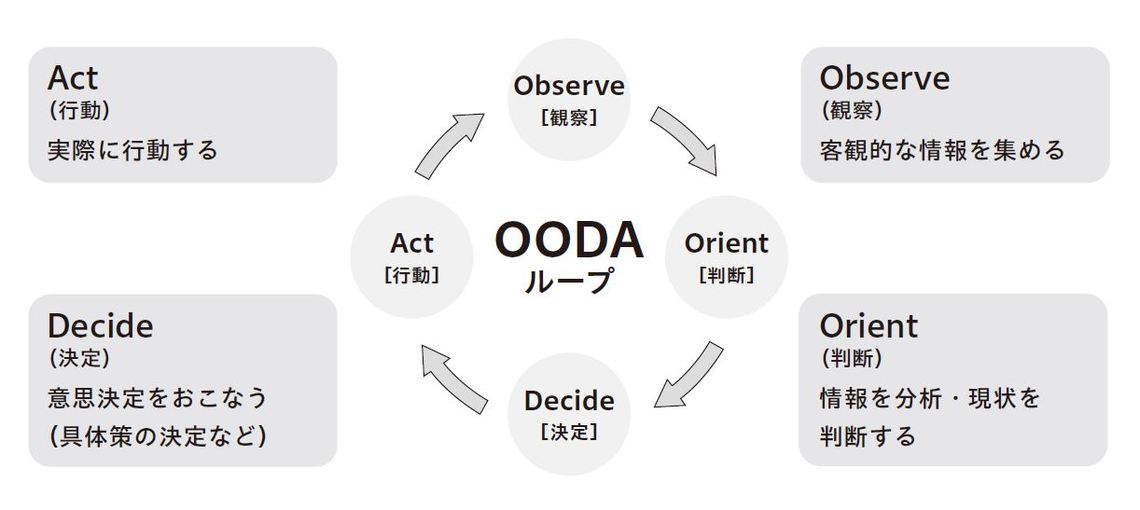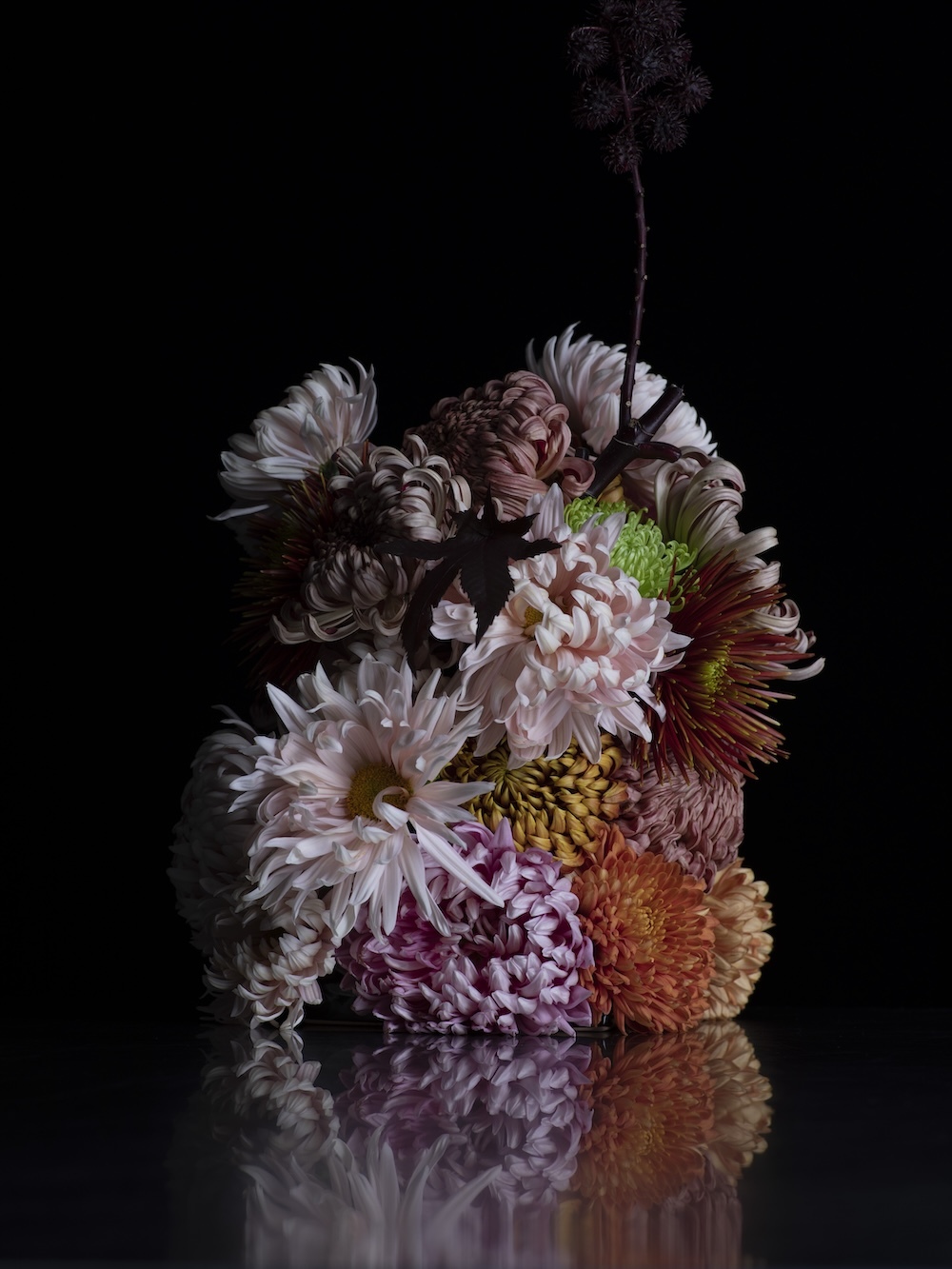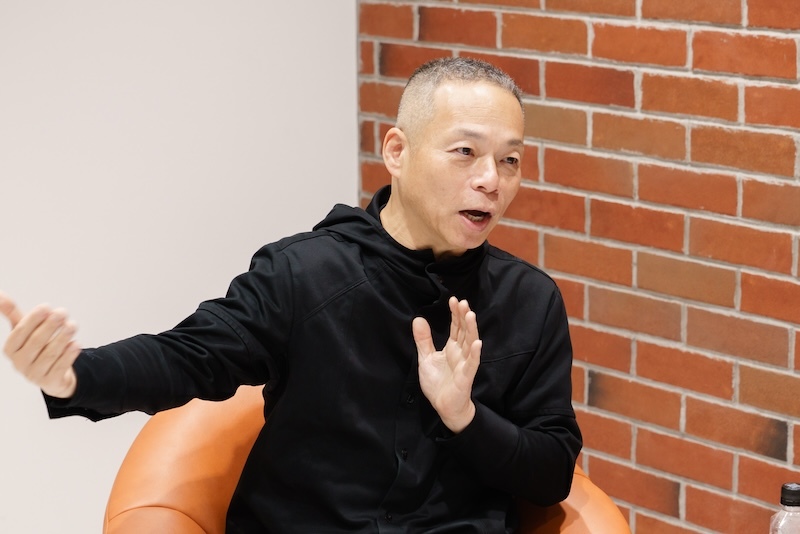The " OODA " loop is gaining attention as a decision-making model that guides solutions to the rapidly changing business challenges of today.
This series shares insights on OODA's appeal and leadership essentials for the future through dialogues with "OODA practitioners" across diverse industries.
This time, we welcome flower artist Mr. Masaru Akai as our guest for a conversation with Aaron Zu, author of " OODA-Style Leadership: The World's Most Powerful Doctrine " (Shuwa System).
Through an interview with Mr. Akai, who has achieved global recognition in the art of floral arrangement ("sōka"), we present his work ethic and creativity—valuable insights for business professionals—across two installments.
【What is OODA?】

A decision-making and action process proposed by John Boyd, a former U.S. Air Force Colonel and fighter pilot. The term OODA is an acronym for Observe, Orient, Decide, Act. Its purpose is to consistently take the best course of action in constantly changing, unpredictable situations. In Western business and marketing, OODA is recognized as an essential decision-making process alongside the traditional PDCA cycle. ( Learn more here ).
"Sōka" offers new discoveries every day. It's a job that constantly engages with change.
Aaron: Mr. Akai refers to arranging flowers as "flower arrangement." It's neither ikebana nor floral design. Could you explain what kind of work flower arrangement is, and why you chose that name?
Akai: I'm the son of a florist, so I've been around flowers since I was a child. Playing with fallen petals, I remember thinking, "Wow, there are so many different scents and colors," and "Even the same flower smells different from the stem and the petals."
Watching and helping my mother work at the shop, I noticed flowers were often arranged when welcoming someone—like when customers visited or for events. They were arranged with thought for the person or place, as a form of hospitality. That's how the term "Sōka" was born. For me, flowers are something you "dress up."
Aaron: "Sōka"—adorned flowers. It's such a clear and yet refreshingly novel name. Also, you refer to yourself as a "flower person." Why choose that term when words like "floral artist" or "ikebana master" are already well-established?
Akai: For example, kado (flower arrangement) is about mastering a single style or form. That's wonderful in itself, but I don't think I could master the "way of flowers." Because when I'm doing sōka, I discover something new every day, and there are so many changes as I interact with clients and the flowers themselves. Tomorrow, flowers are arriving from Hokkaido, and I'm already nervous (laughs). "Will the pale pink I envision match the pale pink the grower imagined?" or "Hokkaido and Tokyo have different cold conditions, so I wonder if they've grown too much?"
Aaron: It's true, they say even the same pink might look different to different people.
Akai: Exactly. Every time is a one-time shot. Sometimes it works out perfectly, other times I think, "I should have done this differently." That's why I can't stop.
I don't follow one set path or style. I engage with the flowers, the client, the space, and the objects, deciding how to present them each time. For example, do I want guests to gasp in surprise when they enter an event? Or do I want them to quietly reflect after returning home, thinking, "Oh, there were maple leaves displayed... but maple leaves aren't in season in winter, are they?" I see myself as responsible for creating that kind of emotional impact. That's why I call myself a "flower person" – someone who conveys feelings through flowers.
Aaron: What you just described resonates deeply with OODA loop thinking. OODA isn't about executing a pre-planned strategy; it's a decision-making process that prioritizes observing the current situation and determining "what's the best move right now? " You never know the exact condition of the flowers you've sourced until you open the box. It's about instantly judging and making decisions in the face of unpredictability to create your work. That's the essence of floral design, isn't it?
Akai: Of course, I have a vision in my mind of how I want to arrange them. But when I'm actually working with the flowers on-site or talking with the client, if I see a better way, I change it right then and there. After all, making the client and their guests happy is the top priority.
Aaron: So, what originally drew you into this world? Was it experiences from your childhood?
Akai: Yes, my mother's influence. She always said, "Working with flowers is such a good job. Being a florist is the best job there is." She said that because when she delivered flowers, even though she was getting paid to deliver them, she was always thanked. Whether it was for celebrations or happy events, or even during sad times, delivering flowers meant hearing "thank you." She said there was no other job like that. Hearing that story constantly since I was little made pursuing this path feel natural to me.
Understanding floral theory while seeking better methods
Aaron: Was it difficult to establish your own unique style as a florist, rather than following the globally recognized art of ikebana?
Akaishi: I believe kado is about inheriting a single style, but I value not being confined to one style. That freedom brings both joy and challenges. I studied kado as a child too. Back then, the tokonoma alcove was the place for flower arrangements, and the image of kado was about a flat, 180-degree space.
But now, fewer homes have alcoves. When you place tables and chairs in a Japanese-style room, your perspective changes. As lifestyles evolve, the overall atmosphere and appearance of the space change too. That means we must think in terms of a 360-degree cube, not just a flat plane. At events, we actually hang flowers from above so people can look up at them, or even lie down to view them.
I think this new way of presenting things is easier for us precisely because we don't have a fixed style. In exchange, whatever method we use, we must move people's hearts and make it successful. So we just have to keep doing it and keep learning. But I think flower arrangement has its own challenges in having to continuously uphold a single style.
Aaron: That sounds similar to the characteristics of new ventures versus existing businesses. New ventures demand persistence, even if it means breaking certain theories, to achieve results. Existing businesses, on the other hand, require protecting the networks and processes built over time and adhering to established theories.
Akai:I think the key lies in combinations, whether arranging flowers or building a business. With flowers, you consider how to combine the materials. There are established principles, like "to express an autumn mountain landscape, combine pampas grass with dried hydrangeas." We understand those principles, but we also explore whether there might be better combinations.
Especially now, with advanced breeding, the choices are endless. A flower might be classified as a chrysanthemum, yet at first glance, it doesn't look like one. But upon closer inspection, it possesses the defining characteristics of a chrysanthemum. There are many such flowers. So, when you first see them, they feel unique and innovative. Yet, when you look deeper, you realize they still adhere to the fundamental principles. That's the kind of arrangement we can create.

©️Akai Masaru
Aaron: It's precisely because you know the theory that you can break it.
Akai: The same applies to the viewer's understanding of theory. For instance, you might think a flower is finished once its petals fall. But among the fallen petals, there are still sepals, petals, and pollen. The way they spread across the water's surface is incredibly beautiful.
Aaron: I see. I've thought of withering flowers as beautiful, like dried flowers, but I've never tried floating them in water.
Akai: When I was younger, I thought only the blooming, full-flowered state was beautiful too. But as I've gotten older, I've become moved by flowers that have reached their peak, achieved their full potential, and are now slightly wilted. That sense of accomplishment, you know? So sometimes I incorporate the very act of petals falling into my work, creating moments that make people pause and notice.
(Continued in Part 2)














